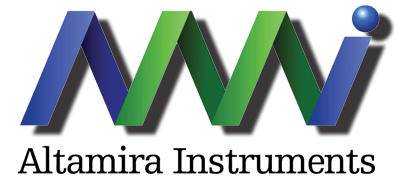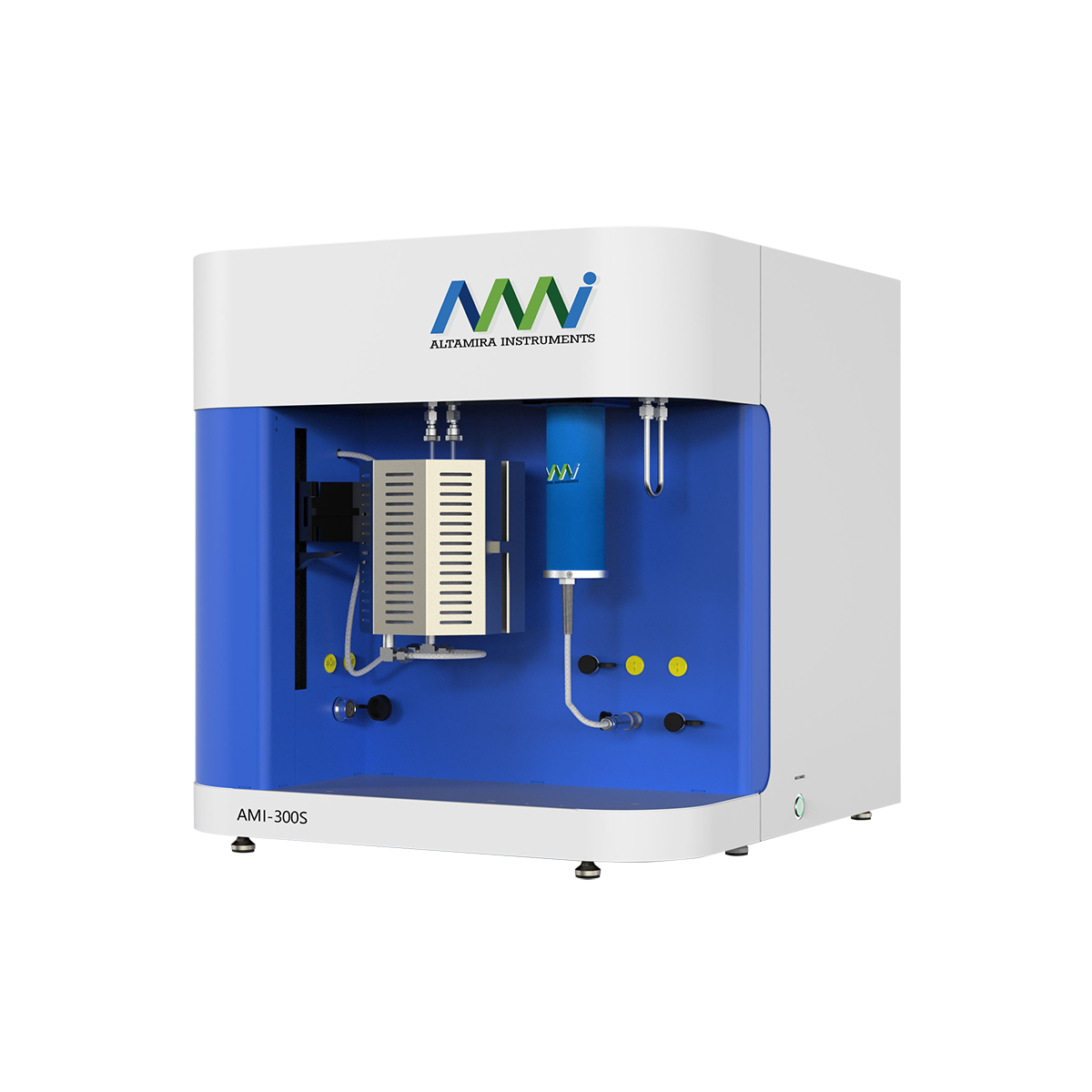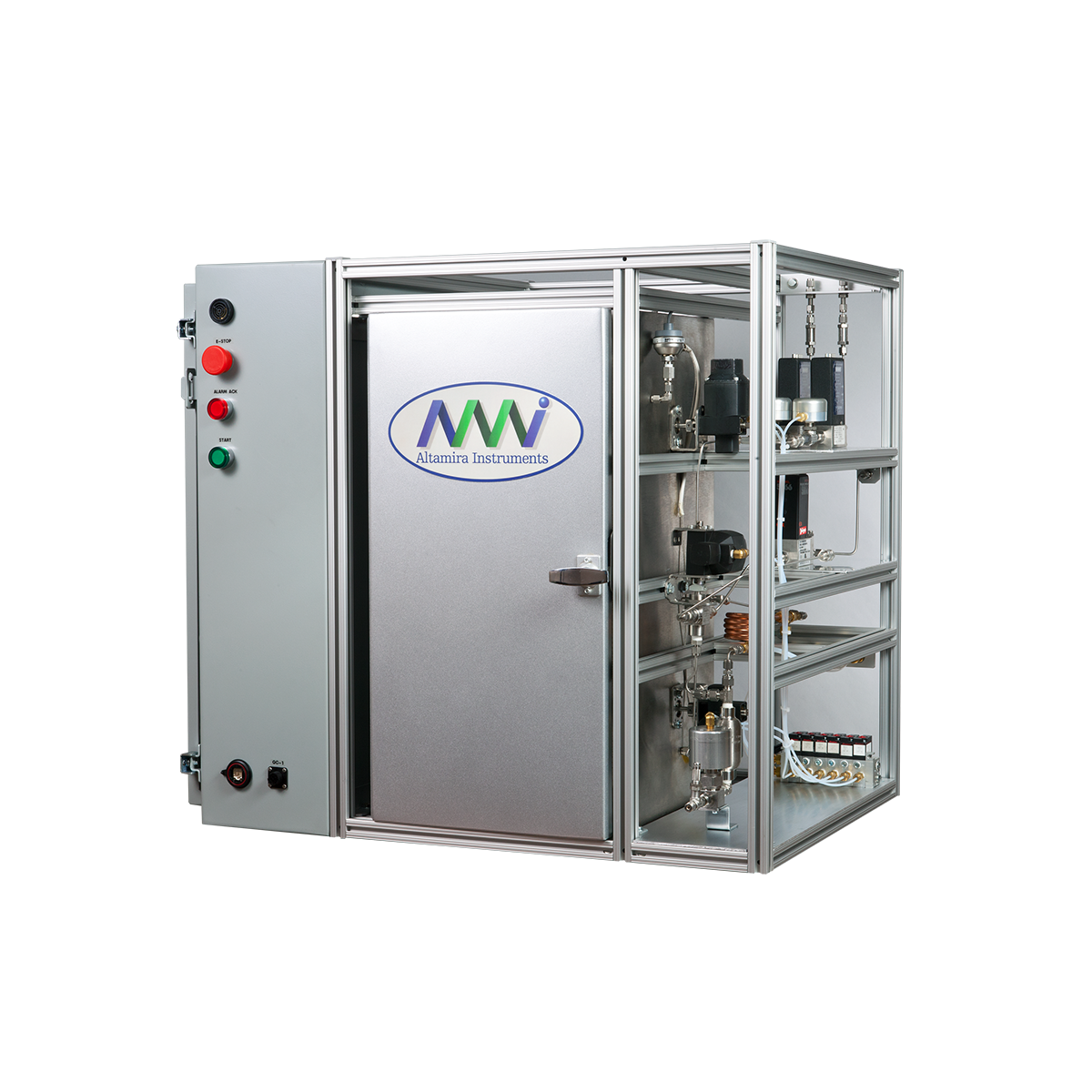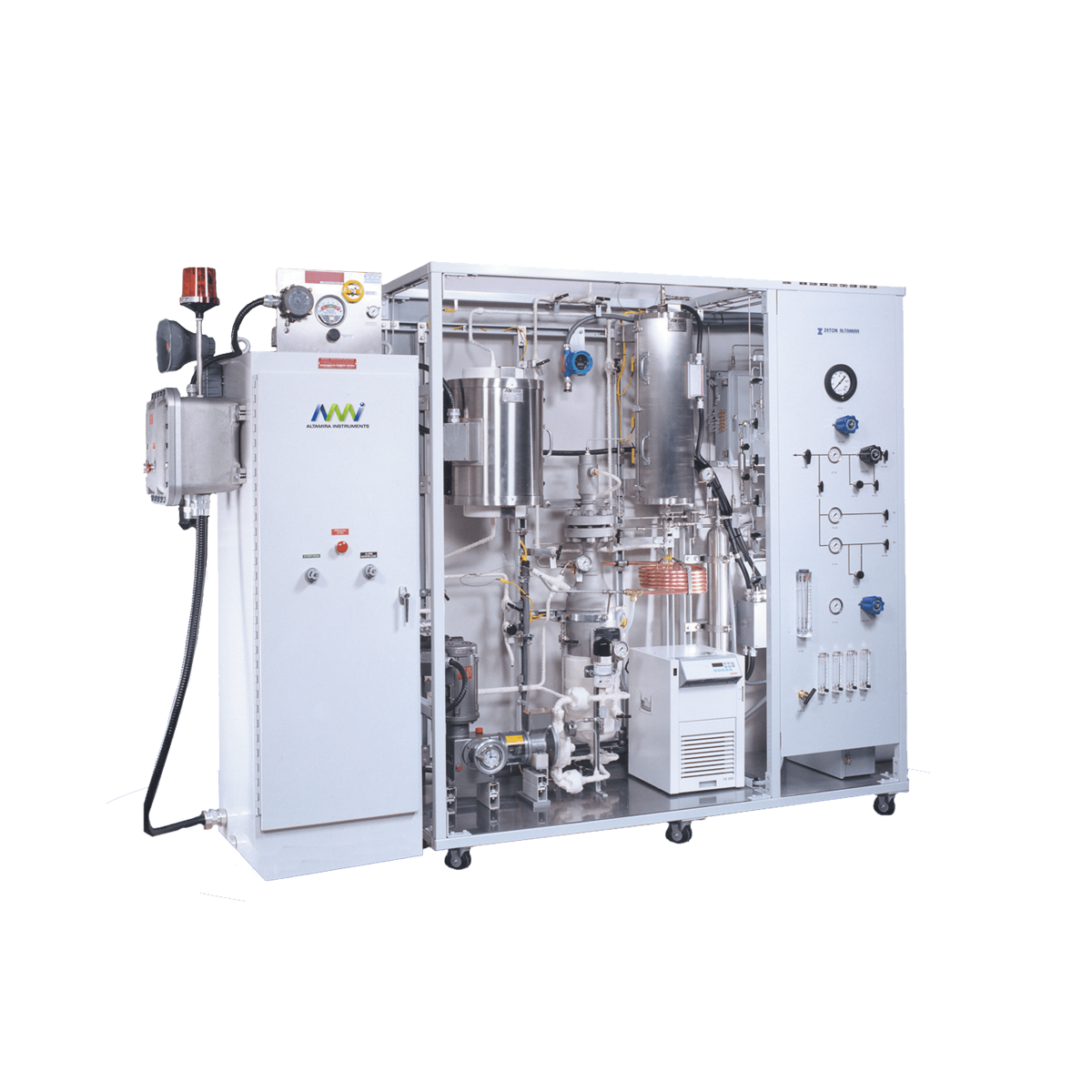Accessibility
The catalytic metal sites must be accessible to relatively large molecules. Hence the diffusion constraints posed by metals dispersed on smallpore supports often preclude their effective use. For this reason, catalysts known as "edge" samples are common, where the metal species is concentrated on the external area of the support and not deep within the pores.
Catalyst Activation
In the petrochemical industry, catalysts for reactions such as hydrocarbon reforming are routinely heated under hydrogen to temperatures of 400°C or greater in order to activate the catalyst, while in the pharmaceutical industry it is unusual to find a batch hydrogenation reaction which is carried out at temperatures higher than 100°C. Therefore, the catalysts used in these mild reactions must be able to be activated under mild conditions. Activation usually involves reduction to the zero-valent state of a metal which was introduced onto the support during catalyst preparation as a metal salt or oxide. Preparation of catalysts which can be activated under mild conditions usually requires the use of different metal salts, higher metal weight loadings, and tailored support materials.
Metal Content
Catalysts for the reforming of hydrocarbons typically contain 1 weight % of a precious metal such as Pt dispersed on an oxide support. The catalyst in an automobile catalytic converter may contain only 0.01 weight %Rh for NOx reduction. By contrast, it is not unusual for a catalytic hydrogenation reaction of a pharmaceutical intermediate to employ catalysts containing 10-20 weight of % metals such as Pd or Pt. Larger amounts of metal mean larger particles of the metal precursor species which can aid in its reduction under mild conditions. There is a compromise between this ease in reducibility and efficient use of the metal, since large metal particles have a smaller percentage of their atoms present as the surface atoms necessary for carrying out catalytic reactions.
Hence the best supported metal catalyst for application in the pharmaceutical industry is one which gives the highest dispersion of the metal, achieves high reducibility under mild conditions, and gives unrestricted access of large organic molecules to the metal surface in the liquid phase.
One step in the production of PrimaxinTM, a broad spectrum antibiotic druq produced by Merck & Co., Inc. is a complex series of reactions involving hydroqenation, hydro-genolysis, and hydrolysis. The yield in this reaction is typically 85%, but variation by ± 1% can mean a difference in hundreds of thousands of dollars in profit. The reaction is carried out at room temperature and the reactants and products are extremely temperature and pH sensitive. The overall chemistry of the reaction and a proposed reaction mechanism are given in Figure 1.
In this study, a combination of catalytic characterization measurements and reaction studies has been employed to develop a screening tool for potential catalyst candidates. Our results have enabled us to propose a 50% reduction in precious metal loading while maintaining reaction performance in one reaction step in the commercial production of a pharmaceutical product.
Experimental
Catalytic characterization measurements were carried out using an Altamira, Instruments, AMI-1 automated temperature-programmed system which was equipped with a thermal conductivity detector to provide quantitative measurements of the selective adsorption of molecules on metal catalyst surfaces. The system is also capable of monitoring other processes including temperature-programmed oxidation and reduction of the metal catalyst. Automatic features of the AMI-1 include programming temperature ramps and controlling temperature; choosing and regulating flow of gases, monitoring adsorption, desorption, and surface reactions.
Our catalyst screening experiment involved using the selective chemisorption of CO on carbon-supported edge-type Pd catalyst to measure the surface area of Pd. One hundred mg of a previously dried catalyst sample was loaded into a Pyrex U-tube reactor of the Altamira system. The sample was subjected to one of three pretreatments: 1) a low temperature reduction in flowing H2 at 25°C and 80 psi for 30 minutes (this procedure, labeled LT, was closest to the actual conditions the catalyst would experience in the reaction itself); 2) a medium temperature reduction in flowing H2 at 45°C and 80 psi for 30 minutes (MT reduction); or 3) a high temperature programmed reduction from 25-500°C at 10°C/min in atmospheric pressure with 10% H2/Ar. The chemisorption measurement was made by pulsing measured aliquots of CO into He stream flowing over the catalyst surface at room temperature. Pulses were continued until no further uptake by the surface could be detected, and the total amount adsorbed was quantified by comparing these pulses with a calibration pulse.
Several assumptions were required in the interpretation of our results. We assumed that CO adsorbs selectively on Pd and not on the carbon support, and that CO can adsorb only on surface Pd sites and cannot adsorb into the bulk of Pd particles. We also assumed a stoichiometry of 1:1 for CO:Pds where the subscript s refers to surface Pd atoms. From this, dispersion, D, was calculated for each catalyst:

which provides a measure of the efficiency of each sample for catalytic reaction.
Catalytic reactions were carried out using an automated reaction calorimeter. The reactor was initially charged with a mixture of amyl alcohol and deionized water. To this was added the catalyst under investigation. The agitation was set to 1000 rpm, and the temperature to 25°C, after which the pH of the reaction mass was adjusted to 5.8. The reactor was then sealed and degassed through a sequence of nitrogen-vacuum pressure purges. The reactant mixture, an ester in n-ethyl pyrolidone (NEP), kept at -70°C, was then charged to an overhead vessel and degassed with atmospheric nitrogen and vacuum purges. The reactant mixture was added by vacuum and gravity to the reactor in rapid fashion, followed by a pH adjustment to 6.1. The agitation was briefly halted to perform hydrogen purges of the head space, after which the agitation was resumed to initiate the reaction. The reaction generates acidic species which lead to depressed pH levels which in turn are detrimental to the product. Therefore, during the reaction period, a caustic solution (aqueous 1N NaOH) was administered to maintain the desired pH profile. Upon completion of the reaction period, the batch was aged during a cool down to 15°C. Upon reaching 15°C, the batch was removed, filtered, and the aqueous layer isolated for chromatographic analysis of the product, and thus the yield obtained.
Results
A. Correlating Catalyst Characterization with Performance
A typical CO pulse chemisorption profile is shown in Figure 2. The first few pulses were completely flat, indicating total adsorption of the CO. After several pulses are adsorbed, "breakthrough" occurs indicating that adsorption of a monolayer is complete. From the number of pulses adsorbed, the volume of the CO sample loop, and the assumed stoichiometry, the number of surface Pd atoms may be calculated and consequently the dispersion.
The CO chemisorption results for a series of different commercial 5% Pd/C catalyst summarized in Figure 3 dramatically illustrate the effect that Pretreatment conditions can have on the Pd dispersion. It is also quite clear that these four seemingly similar catalysts respond quite differently to different reduction procedures. Catalyst A maintained a high dispersion after both LT and HT treatments, while for Catalyst D treatment at higher than ambient temperature was required in order to achieve high dispersion. Catalyst D, therefore, would most likely NOT be a good candidate for reactions under very mild conditions, since its surface is activated only after higher temperature treatment. Our reaction experiments bore out this conclusion with Catalyst D exhibiting significantly lower yield than Catalyst A.
This example suggests that it is not enough simply to compare the dispersions of different catalysts to assess their relative catalytic performance unless two other factors are considered: a)catalysts should receive identical pretreatments; and b) pretreatment conditions should be chosen to be as close as possible to the actual conditions that the catalyst will experience in the reaction itself.
The hydrogenation reaction was carried out over a series of 5-20 wt% Pd catalysts, and dispersion measurements were used to compare the productivity of each catalyst as a function of the amount of surface Pd available for re- action. Some of these results are shown in Figure 4 in which the yield of the desired product and the total available surface Pd are each normalized to that of a control run carried out with the catalyst presently used in the commercial reaction. Dispersion measurements after the LT pretreatment were used in activation conditions during the reaction. The value of "total available Pd" was constructing Figure 4 because this treatment most closely approximates the calculated by multiplying the dispersion by the weight loading of the sample and the total weight of catalyst in the reactor, normalized to this value for the control run (yield variance =0%; available Pd=1 for a control run).
While scatter in the plot acknowledges that this simple correlation cannot account for all variables important in optimizing product yield, it does demonstrate a distinct correlation between yield and the amount of surface Pd. The importance of using dispersion values obtained under the most appropriate pretreatment conditions is emphasized even further when these same yield data are plotted vs. available Pd calculated using the HT reduction rather than the LT reduction (see Figure 5). It is clear from this figure that no relationship exists between catalyst performance and its dispersion if the dispersion value used is that measured after a pretreatment unrelated to the conditions the catalyst experiences in the reaction.
Even more striking is the lack of a relation ship between the yield and total amount of Pd metal loaded into the reactor, as shown in Figure 6. Unlike the correlations developed in Figures 4 and 5, which attempted to account in different ways for the fraction of Pd available to perform the catalytic reaction, in this case only the total weight of Pd and not its surface area was not taken into account. This figure illustrates that weight loading by itself is probably the least valid way to assess catalyst performance and emphasizes again the need to determine a way to differentiate active and accessible Pd from the total Pd present in a catalyst.
These results illustrate a most important point that is seldom discussed explicitly but which is the root of much miscommunication between catalyst vendors and scientists or engineers responsible for making commercial catalytic reactions work: the properties of any supported metal catalyst system are completely dependent on and dictated by its treatment history and its working environment, which determine the percentage of metal which will be available to perform the desired catalytic reaction. Catalyst characterization measurements carried out without regard for the conditions under which the catalyst is to be employed will not provide an accurate assessment of the catalyst's likely performance in the reaction.
Conclusison
A catalyst characterization method has been developed which successfully correlates available metal surface area with reaction performance. This work demonstrates the critical importance of measuring catalyst properties at the conditions under which it wi11 be employed.




